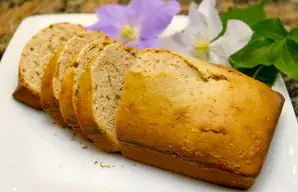Posted on Sunday, October 18, 2015 in
Bread Recipes
Delicious Crusty Rolls (Papo-Secos) Recipe
These delicious crusty rolls (papo-secos) recipe, are great for breakfast, buttered up and enjoyed with cheese or with anything.
| Preparation time | 2 h 15 min |
| Cooking Time | 20 min |
| Ready In | 35 min |
| Level of Difficulty | Easy |
| Servings | 8 |
Nutrition Facts (Per Serving)
| Calories | 180 |
| Fat | 5g |
| Carbs | 28g |
| Protein | 4g |
Ingredients
1 teaspoon of sugar2 cups of water, lukewarm1 package of active dry yeast5 cups of flour and more for kneading1 teaspoon of salt2 tablespoons of butter2 teaspoons of vegetable shortening
Get Portuguese ingredients 
Preparation
- Dissolve the sugar in 1/2 cup of the lukewarm water, sprinkle the yeast into this mixture, stir slightly and set aside for 10 minutes.
- Measure the flour into a large bowl and add the slightly softened butter (Mixing the butter into the flour is not necessary at this point).
- Add the yeast mixture to the flour and stir (I use a hand held bread hook).
- Gradually add the remainder of the water, 1 and 1/2 cups, and stir (The dough will become sticky).
- Place the dough on a floured surface for kneading (Have extra flour close by for your hands and the surface).
- Knead the dough for 10 minutes, adding bits of flour to hands and board as needed to keep the dough from sticking).
- Add the salt at this time or add after the first rise.
- After the kneading form the dough in a smooth ball.
- Grease a bowl large enough for the dough to double in size.
- Grease hands with the shortening and rub gently over the dough surface.
- Place the dough into the bowl and cover with a dish towel.
- Place in a draft free area. If you kitchen is cool like mine in the winter place the covered bowl inside the oven with the interior light on only … no additional heat, and let it rise for 1 and 1/2 hours or until doubled in size.
- Once the dough has doubled in size and has been punched down, add salt now if you haven’t already and gently knead to incorporate salt if needed.
- Form the dough into a round flat disk and cut like a pie into 16 pieces.
- Roll each of the 16 pieces into a ball and then flatten to approximately 3 inches in diameter.
- Fold the pop in half and pinch the edges together. You can have the seam along the side as I do here or the seam can be right down the center of the top. Pinch the ends to a slight point.
- Place these formed pops about 2 inches apart on a greased cookie sheet. and cover and let rise for 50 minutes in a draft free area.
- Bake for about 15 minutes or until golden brown in a preheated oven at 230°C or 450°F.
- The top rack is recommended to avoid burning the bottom of the pops.
- Spread with butter and dig in!
TIP: Use the top rack, a must, and place a pan of water on the bottom rack, not a must. These buns were at one time cooked in brick ovens. The added water helps produce a similar product as one baked in a brick oven, crusty.
Recipe Credit: Anita
Photo Credit: Tales from the Kitchen Shed
Recommended Recipes
Lydia's Yum Cinnamon and Raisin Bread Recipe
Lydia's yum cinnamon and raisin bread, has a great consistency and smells wonderful, it's great with coffee or tea.
| Level of Difficulty | Easy |
| Servings | 10 |
Delicious Garlic, Olives and Cheese Toast Recipe
This delicious garlic, olives and cheese toast (torras com azeitonas e queijo), garlic and olive oil, takes no time to make and is great for a quick meal.
| Level of Difficulty | Very Easy |
| Servings | 2 |
Popular Anise Ribatejo Bread Recipe
This popular anise Ribatejo bread is a regional and popular bread in this province in Portugal.
| Level of Difficulty | Very Easy |
| Servings | 10 |
Comments







